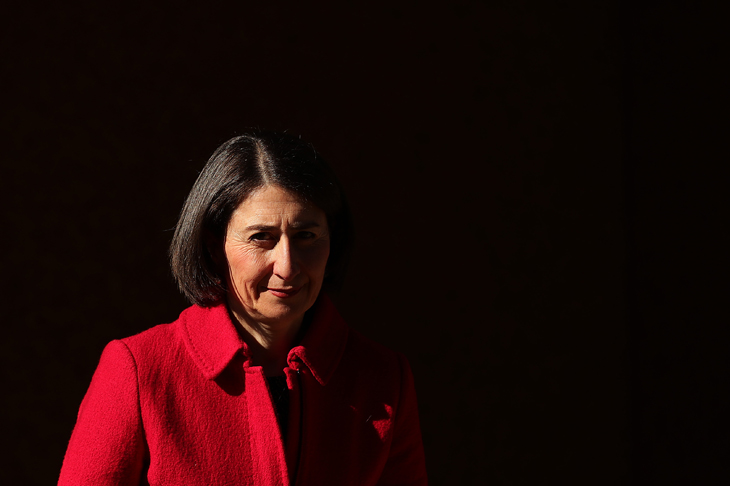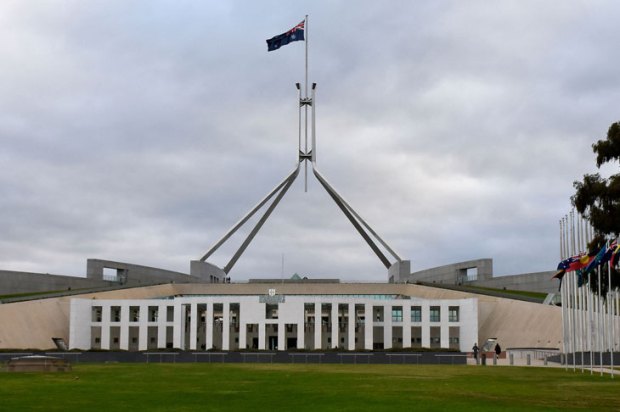Three years ago, the NSW Premier, Gladys Berejiklian, declared ‘The people of NSW should not continue to be held hostage to a lowest common denominator approach that privileges the parochial interests of small populations.’
Ms Berejiklian was calling ‘game over’ for a system which continues to allow Tasmania to receive 62 per cent of its total revenue from the Commonwealth thanks to decades of Green activism turning businesses away. She was also venting her frustration that, under current arrangements, the ACT, with a population of 400,000, has a voice equal to a state of 7.7 million.
The NSW premier is not alone. While others lack the courage to say so, respect for the federation appears to be a veneer. When Premier Daniel Andrews secretly signed a memorandum of understanding with Beijing to make Victoria a member of the Chinese Communist Party’s $1.5 trillion Belt and Road Initiative, he signalled Melbourne’s disdain for the federal government’s primacy in foreign affairs.
The Northern Territory government showed equal contempt when it gave the commonwealth just a few hours’ notice of its agreement to lease the Port of Darwin to a Chinese entity for 99 years.
But it’s the states’ and territories’ behaviour during the pandemic which best demonstrates their parochialism and profound lack of national interest. In particular, Victoria, Queensland and Western Australia have acted as if they are no longer part of the federation.
Prime Minister Scott Morrison, aware of these tendencies and driven by a critical need for a consistent nation-wide response to Covid-19, last March established a national cabinet consisting of himself and all state and territory leaders. He gave it ‘the status of a cabinet meeting’, meaning it has the same confidentiality and Freedom of Information protections and protocols as the federal cabinet.
Yet his desire for uniformity was largely ignored. In a display of political vanity and bureaucratic incompetence, Victoria rejected Australian Defence Force quarantine assistance. The result was the unnecessary loss of hundreds of lives and the world’s harshest lockdown. For 112 days Victorians were subjected to virtual house arrest and police brutality. The National Cabinet watched on in silence.
Silence also reigned supreme when Queensland, clearly flouting the National Cabinet’s Framework on social distancing, allowed 49,000 fans to cram into Suncorp Stadium to watch a State of Origin football final.
Queensland’s inconsistent behaviour also includes border control. American actor Tom Hanks and Australian Football’s elites were accorded ‘class exemptions’ because ‘people in entertainment and film…bring a lot of money into this state’. Ordinary Australians seeking access on compassionate or other compelling grounds were treated like aliens.
An unborn baby died because its Covid-free mother living close to Queensland’s border was denied emergency treatment in a Brisbane hospital. Premier Palaszczuk reasoned that ‘People living in NSW, they have NSW hospitals. In Queensland we have Queensland hospitals for our people’. So much for, ‘We are one, we are Australians’.
Perhaps encouraged by latent secessionist instincts and abundant iron ore revenues, Premier Mark McGowan also turned his back on the nation. ‘In effect we’ll be turning Western Australia into an island within an island — our own country,’ he said. Spot the Aussie there.
No wonder a frustrated prime minister said, ‘There are times when it has felt like Australia could break apart… I’m talking about our federation, I’m talking about us as a nation’. The latest South Australian lockdown and state border closures for a mere 22 infections, reinforces his point. Will the National Cabinet continue to tolerate politically fashionable, economically destructive and constitutionally questionable lockdowns every time there’s a minor outbreak? As long as Canberra provides a cost-free lifeline, probably yes.
In an effort to restore a sense of national pride, Mr Morrison plans to replace the 28-years-old Council of Australian Governments with a ‘completely new system’. He claims it will be ‘a more effective body for taking decisions in the national interest than COAG’. On performance to date, good luck with that.
Basically the system is broken. It no longer represents the practical aspirations of the Constitution but reflects the rent- seeking mindset of the twenty-first century. No doubt this has much to do with the the establishment in 1933 of the Commonwealth Grants Commission which seeks equality of government service delivery across the nation. Since the introduction of the GST, there has been some tinkering, but no amount of bureaucratic rejigging can ‘fairly’ balance commodity price volatility, the higher cost of living in NSW and Victoria nor state and territory mismanagement. Still, successive federal governments have fostered dependence on the Commonwealth, reducing many jurisdictions to the status of outsourced agencies of Canberra. The Chinese call this debt-trap diplomacy.
With government debt at all levels climbing to historic levels, an ideological clash is looming between those who believe in the collective, ‘co-operative’ model and the proponents of a competitive system with clearer delineation of Commonwealth-state responsibilities. The latter aligns more with the intent of the Constitution and would return responsibility and accountability for services like health and education to the states and territories. They would also set their own GST rates and retain the revenue.
A competitive framework would also allow the Commonwealth to concentrate on eliminating many of the friction costs which inhibit innovation and economic growth and which discourage self-belief.For too long Canberra has stood by when publicly funded states, territories and institutions undermine the national interest.
This is a watershed moment for the federation. The sad reality is that over time, while in pursuit of narrow political interests, the spirit and intent of the Constitution have been badly compromised. Australians can either ‘unite in one indissoluble federal Commonwealth’, with each state and territory taking back responsibility for its own posterity or it can descend into a drab, inward-looking soviet, subject to Canberra’s ever growing dictates.
Got something to add? Join the discussion and comment below.
Get 10 issues for just $10
Subscribe to The Spectator Australia today for the next 10 magazine issues, plus full online access, for just $10.
You might disagree with half of it, but you’ll enjoy reading all of it. Try your first month for free, then just $2 a week for the remainder of your first year.













Comments
Don't miss out
Join the conversation with other Spectator Australia readers. Subscribe to leave a comment.
SUBSCRIBEAlready a subscriber? Log in